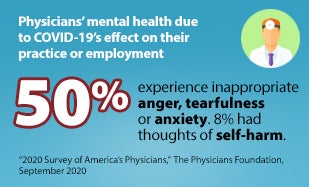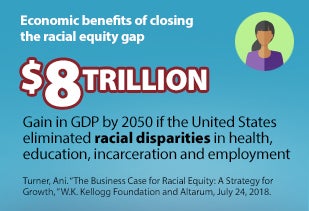

Strategic Planning Imperatives for the Path Forward

As health care suffers a resurgence of COVID-19 cases that has rapidly surpassed peaks not seen since spring, now is the time to think strategically about the path forward. Exploring gaps and challenges in critical areas like behavioral health, workforce and health equity, diversity and inclusion will be critical, with hospitals and health systems on track to lose more than $323 billion this year due to the pandemic.
The AHA’s recently released 2021 Environmental Scan provides key data and insights on the current operational landscape and is designed to help leaders maneuver the rough road ahead.
Behavioral Health Needs Swell
The pandemic has highlighted the need to focus on and invest in the behavioral health ecosystem. Hospitals and health systems are responding by improving access to care, including integrating physical and behavioral health services, establishing community partnerships to expand the care continuum, deploying digital solutions and launching anti-stigma campaigns.
 More of these efforts will be needed to meet the growing needs of Americans who are increasingly experiencing stress, anxiety or great sadness in dealing with the pandemic. Surveys show that one in three adults in 2020 have reported symptoms of an anxiety disorder, compared with one in 12 a year ago, with Blacks and Hispanics suffering symptoms at much higher levels than whites. Annual mental illness treatment rates for minorities also were far below that of whites, according to a fall report from the National Alliance on Mental Illness.
More of these efforts will be needed to meet the growing needs of Americans who are increasingly experiencing stress, anxiety or great sadness in dealing with the pandemic. Surveys show that one in three adults in 2020 have reported symptoms of an anxiety disorder, compared with one in 12 a year ago, with Blacks and Hispanics suffering symptoms at much higher levels than whites. Annual mental illness treatment rates for minorities also were far below that of whites, according to a fall report from the National Alliance on Mental Illness.
Caring for the Caregivers
Workforce shortages and clinical staff burnout have been exacerbated during the pandemic. As a result, there’s a renewed emphasis on the need for structural changes, resources for individuals and capacity-building measures to ensure a resilient and diverse workforce now and in the future.
 Top workforce priorities, according to the AHA Changing Workforce Task Force, include:
Top workforce priorities, according to the AHA Changing Workforce Task Force, include:
- Employee wellness.
- Training and retraining.
- Job design that workers value.
Leaders also need to be keenly aware of how physicians, nurses and other front-line caregivers are processing their emotions during the crisis and beyond.
A Physicians Foundation survey this year found that half of doctors who responded experienced inappropriate anger, tearfulness or anxiety and 8% had thoughts of self-harm.
All-important Health Equity, Diversity and Inclusion
 The pandemic has disproportionately affected people of color and has highlighted long-standing health care disparities. Workforce diversity, cultural humility and unconscious- and implicit-bias training are essential for strengthening patient and community relationships. To significantly advance health in America, racial, ethnic and cultural inequities must be addressed.
The pandemic has disproportionately affected people of color and has highlighted long-standing health care disparities. Workforce diversity, cultural humility and unconscious- and implicit-bias training are essential for strengthening patient and community relationships. To significantly advance health in America, racial, ethnic and cultural inequities must be addressed.
This is as much an economic imperative as it is a social one. A report from the W.K. Kellogg Foundation and Altarum notes there could be an $8 trillion gain in GDP by 2050 if the U.S. were to eliminate racial disparities in health, education, incarceration and employment.
To address these issues, leaders must focus on the underlying inequities that contribute to health disparities, including access, affordability and eliminating barriers to essential services.



